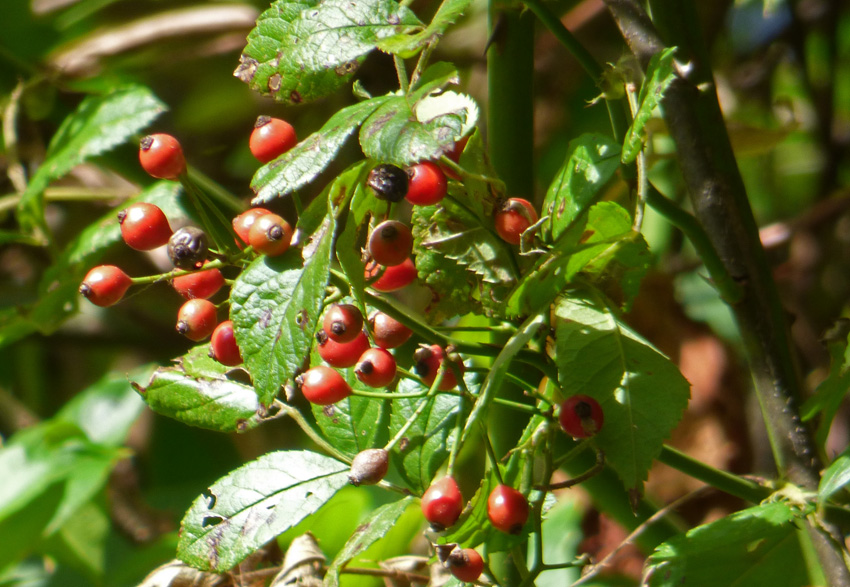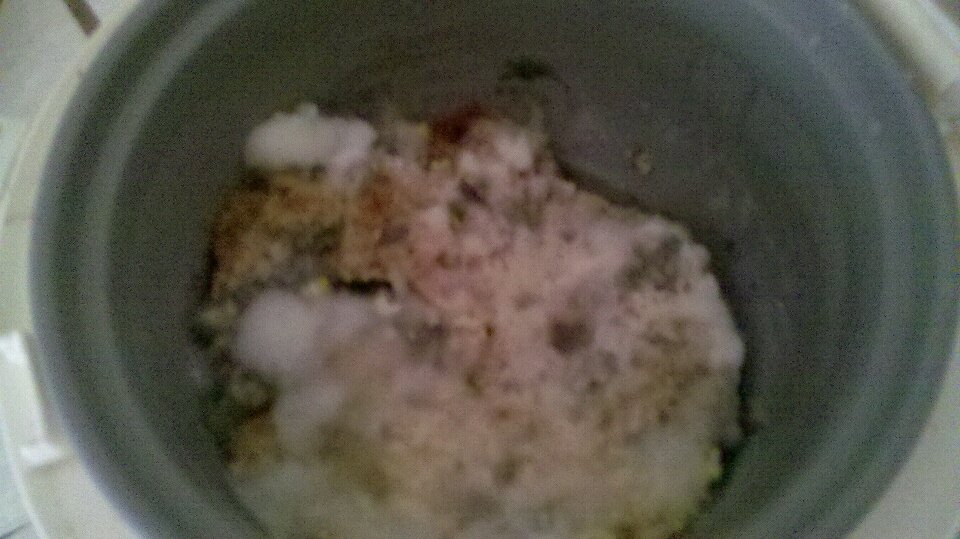
I just tried one of the bright red berries right by my staircase for the first time. The berries are arranged in the same positions and share the same locations on the stems as small green bulbs and white flowers. I have never witnessed the full process of their growth without interference. The berry bunches are conically fractal and coil upwards in configuration. The husk I picked is soft, starchy, and tasteless. Possible source of carbohydrates. The interior approximates two fungal caps touching to create an empty cavity between them. Initially, bland, then faintly sweet, then several seconds of nothing, then strongly acidic, spicy, bitter, and sour, all in quick succession, for a prolonged period of time. I have previously removed and inspected one of these berries earlier in the growth cycle and the interior looked like a yellow kernel of corn, but I was hesitant to taste it and tried planting it instead. Nothing happened. It was slightly brittle, so I might have been too late. An even younger sample contained a green core with root emerging, similar to a chic pea in appearance, although the root was not strong enough to break the surface of the berry. Possible slow-growth fungal infection preventing reproduction and growth of the host plant, possible vine-growth adaptation to escape being eaten from the inside out, limiting zygote resources, or possible need for burial of the entire plant in a microbially-beneficial medium in order for it to return to a legume-like, lodden-reproductive (as opposed to hidden-reproductive) state. In a further-decayed specimen of berry (going from brown to black to gray, with a hardened, withered husk), the fungal caps appear to be covered in and devoured by a white surface mold. The only animals known to live in the immediate vicinity and interact with the plant are large numbers of highly motivated ants (all gone now due to mass die-off), and stray, disinterested bees. Birds and squirrels do not eat the berries. Ever. Even when housing kernels or zygotes. Those that do, spit them on my deck, immediately after masticating, possibly in order to avoid tasting the flavors that follow the initial sweetness. Indicative of habitualized distaste for long-term negative effects due to the microbiological interactions. Possible applications exist as a food source or chemical flavoring or extremely mild toxin. Also a rather fair approximation of a cell colony filled with cyclical, chain-consuming organelles, all subcysting within a single sheathe. Let’s contact the HOA and conduct a survey.
I think I know what got into the week-old rice in my rice cooker …Or maybe…I think I know what the mold on my rice got into.

A clever basher like me would place the plant’s ground-up internal organs as centerpieces in a friendly, neighborhood spiderweb to give an 8-legged squatter libertine champ better luck at hunting 6-legged mind-control freaks.
The taste test might be slightly “fixed”, as I have consistently spit on the plants while smoking cigarettes after delicious meals for the last couple of years. Quid-pro-quo, Clarice. Quid-pro-quo.
Death, fear the reaper.

Leave a Reply
You must be logged in to post a comment.